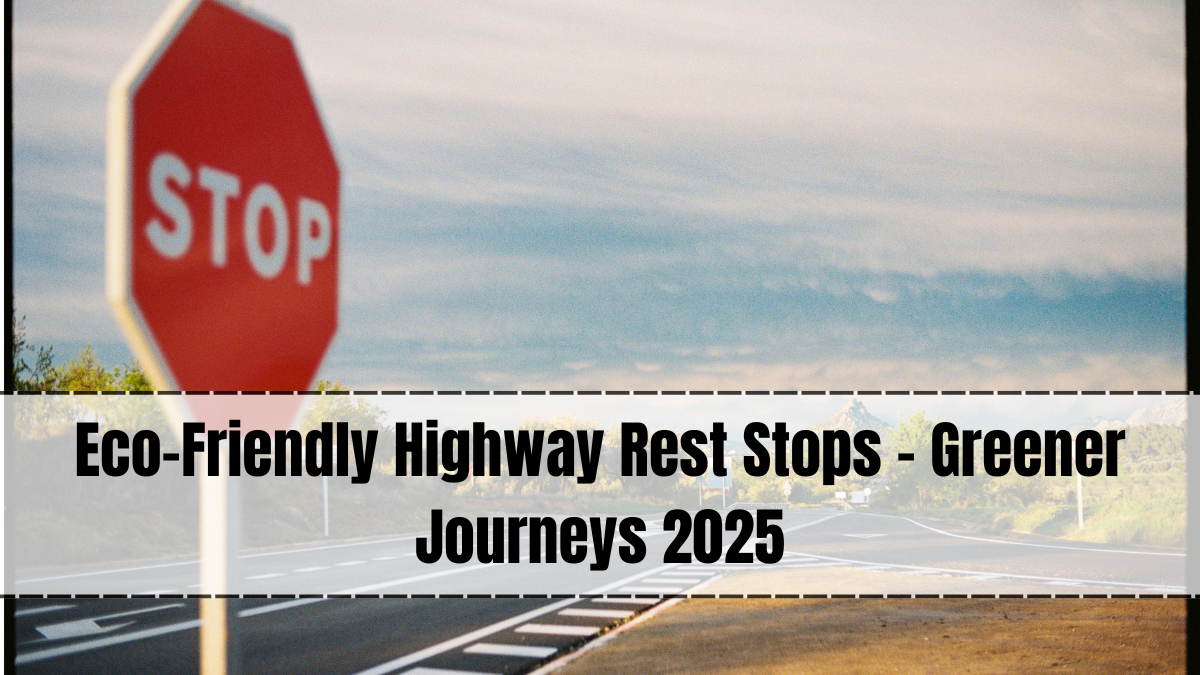In 2025, highway travel is not just about speed and connectivity—it’s also about sustainability. Eco-friendly highway rest stops are redefining the way travelers pause, refresh, and recharge during long journeys. Designed to minimize environmental impact, these rest areas combine green architecture, renewable energy sources, and smart resource management to promote a cleaner and healthier travel experience.

Features of Eco-Friendly Rest Stops
Modern eco-rest stops are built with environment-first principles in mind. Common features include:
-
Solar-powered lighting and charging stations for vehicles.
-
Rainwater harvesting systems for washrooms and landscaping.
-
Biodegradable or compostable food packaging in cafeterias.
-
Green roofs and vertical gardens to reduce heat and improve air quality.
-
EV charging stations to promote electric vehicle adoption.
These facilities offer travelers comfort while ensuring the infrastructure leaves minimal carbon footprint.
Benefits for Travelers and the Environment
-
Cleaner Air & Reduced Pollution – Lower emissions due to renewable energy and better waste management.
-
Convenience for EV Users – Charging stations are strategically placed for optimal travel planning.
-
Water Conservation – Rainwater harvesting and recycling systems reduce water waste.
-
Healthier Food Choices – Many eco-rest stops offer locally sourced, organic food options.
-
Enhanced Aesthetics – Green landscaping makes rest stops more pleasant and inviting.
Government and Private Initiatives
-
India: The National Highways Authority of India (NHAI) has launched pilot eco-rest stops along major expressways like the Delhi–Mumbai Expressway.
-
Global Examples: In countries like Sweden and the Netherlands, eco-stops run entirely on renewable energy and feature zero-waste operations.
These initiatives show that sustainability and convenience can go hand in hand.
Technology Integration
Eco-rest stops in 2025 are not just about being green—they’re also smart. Many feature:
-
IoT-based energy monitoring systems to track and optimize power usage.
-
Automated waste segregation units for efficient recycling.
-
App-based booking for parking spots and EV chargers.
This ensures travelers experience fast, tech-enabled services without compromising sustainability goals.
Challenges and Future Potential
While the concept is gaining popularity, challenges remain:
-
High setup costs for solar infrastructure and water recycling systems.
-
Maintenance requirements to keep green features functional.
-
Need for standardization in eco-friendly facility designs across regions.
Despite these challenges, experts predict that by 2030, most major highways worldwide will feature zero-emission, fully sustainable rest stops.
FAQs
What makes a highway rest stop eco-friendly?
It incorporates renewable energy, sustainable materials, and waste-reduction systems to minimize environmental impact.
Are eco-rest stops only for electric vehicles?
No. They cater to all travelers but include special provisions like EV charging stations.
Do eco-rest stops cost more to use?
Generally, no. The services are priced similarly to regular rest stops, but long-term operational costs are reduced due to energy savings.
Can these rest stops operate off-grid?
Yes. Many are designed to run independently using solar and wind power.
Click here to know more.
